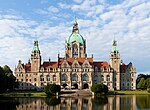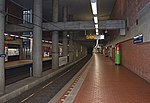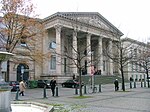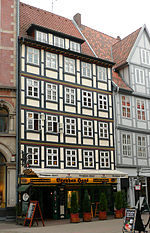Museum August Kestner
1889 establishments in GermanyBuildings and structures in HanoverDecorative arts museums in GermanyEgyptological collections in GermanyEthnographic museums in Germany ... and 7 more
German museum stubsLower Saxony building and structure stubsMuseum August KestnerMuseums established in 1889Museums in HanoverNumismatic museums in GermanyTourist attractions in Hanover

Museum August Kestner, previously Kestner-Museum, is a museum in Hanover, Germany. It was founded in 1889. The museum was renamed Museum August Kestner in December 2007 to avoid confusion with the Kestnergesellschaft, a local art gallery. Museum August Kestner is centered on the collections of August Kestner and his nephew Hermann Kestner, later followed by the collections of Friedrich Culemann and Friedrich Wilhelm von Bissing. It contains four different categories of antiquities: Ancient Egypt, Classical Antiquity, Numismatics and Handicraft.
Excerpt from the Wikipedia article Museum August Kestner (License: CC BY-SA 3.0, Authors, Images).Museum August Kestner
Trammplatz, Hanover Centre (Centre)
Geographical coordinates (GPS) Address Phone number Website External links Nearby Places Show on map
Geographical coordinates (GPS)
| Latitude | Longitude |
|---|---|
| N 52.368 ° | E 9.736 ° |
Address
August-Kestner-Museum
Trammplatz 3
30159 Hanover, Centre (Centre)
Lower Saxony, Germany
Open on Google Maps











